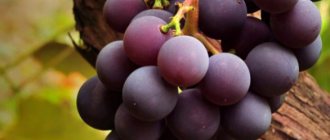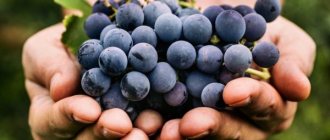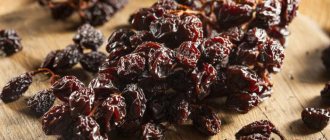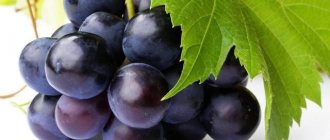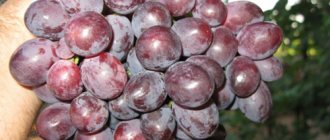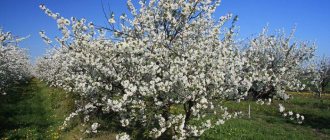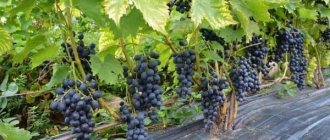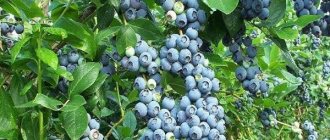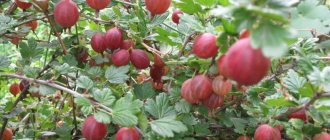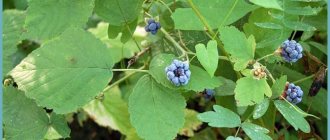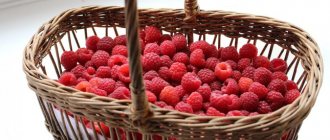Grapes are a fruit completely filled with sweet juice, accompanied by a delicate fruity aroma, and the taste is pronounced! Grapes contain vitamins, minerals and beneficial trace elements for the human body. The most important thing is that all these medicinal substances do not leave during heat treatment of the product. The small fruits form clusters and are used to make wine, skate and champagne. In this article you will find everything about seedless grapes.
Advantages of the “Kishmish” grape variety
Grapes are considered one of the most widespread berries throughout planet Earth. At the moment, the list of countries in which it has not even begun to be cultivated is zero. Grapes can be grown either on a special plot for sale, where there will be dozens of trees, or on your own dacha or country plot, where one or two trees can grow. Today there are about six hundred grape varieties. Experts do not want to stop there.
The favorite grapes are those that have no seeds. This is understandable - it is both safer and faster, nothing prevents you from immersing yourself in the full pleasure of eating ripe and sweet grapes.
Also, these grape varieties are used for making raisins, namely for drying the berries.
One cannot fail to mention another advantage of such varieties - a high level of yield and resistance to frost.
The grape varieties “Kishmish” and “Korinka” are among the most famous since ancient times. Nowadays, other grape varieties are labeled “kishmish” to make it clear that they do not have seeds. The Corinka grape is a small, dark and intensely sweet fruit. Today, a raisin research institute exists and is still operating in Greece.
Seedless species are used to pollinate other varieties of grapes in order to create breeding species and varieties. All seedless fruits contain not only sugar, but also natural acids. They also have a richly sweet taste, a pleasant and unusual aroma, and a thin skin. They are ideal to eat both raw and cooked, or as an addition to any dish.
Russian Corinka: the history of the appearance of the variety
This grape was bred in the Tambov region by scientists L. Shtin and I. Filippenko. To get it, they crossed two varieties - “Zarya Severa” with “Black Kishmish”.
The goal of the scientists was not to obtain seedless grapes, but to develop a frost-resistant plant. As a result of the work of breeders, they managed to obtain a type of grapevine that could withstand frosts down to -28 degrees.
Russian Korinka
Russian Corinka is a table variety characterized by very early ripening. The growing season lasts on average only 115 days.
Interesting fact : Russian Corinka can independently act as a rootstock for more demanding and less cold-resistant types of grape crops.
Corinka has another advantage - it has a beautiful decorative vine. Thanks to this feature, many people choose this variety for the purpose of decorating and beautifying their summer cottage.
Grape propagation methods
Many people wonder how these grape varieties can reproduce without seeds. Most existing seedless varieties are hybrids that were created by crossing Black Monukka grapes with Thompson grapes. They have their own advantages and disadvantages, similarities and differences, for example, the shape of the fruit, their color, weight, size. Why is there no seed in the raisin variety? In fact, there are seeds, but they have not fully developed during the growth of the grapes. Different “raisins” have different sizes, numbers and degrees of hardness of the seeds.
To propagate grapes, you must use cuttings or layering. These two methods are vegetative.
It is worth remembering that seedless grape varieties were specially bred this way by specialists.
To obtain new hybrids, planting material, namely seeds, is used. In other cases, propagation methods using cuttings and layering are used.
Now experts are developing breeding varieties from seeds that have incomplete development. It is necessary to propagate by vegetative methods to preserve all the advantages of the variety.
Kishmish grape varieties require pollination, so seeds can be seen in the fruits, but they are underdeveloped. But the “Korinka” variety does not need pollination, so it is impossible to find traces of seeds in it.
Seedless grape varieties have a high level of cold tolerance, large fruit size, excellent ripening time and degree of ripeness.
White soup with grapes
You need: 200 g of peeled almonds, 4 slices of stale white bread without crusts, soaked in cold water and squeezed, 3 crushed cloves of garlic, 1/2 cup of olive oil, 2-3 teaspoons of wine vinegar, salt, 250 g of nutmeg or other fragrant grapes, peeled and seeds, chopped parsley.
Cooking: put almonds in a bowl and pour boiling water over them. Leave for 30 seconds, then remove the nuts and peel them. Place nuts, bread and garlic in a mixer and mix. While stirring, slowly pour in the oil. Add enough cold water, about 2 cups, to get a creamy consistency. Add vinegar and salt to taste, then grapes, cool. Pour into a tureen or individual plates. Serve with chopped parsley.
Grapes varieties “Jupiter”, “Neptune”, “Mars”
The fruits do not differ much in appearance, the color is red or purple, large berries with sweet juice, and a pleasant smell. They have a high level of resistance to cold and fungal diseases, as well as gray rot. The Jupiter variety is used to make red wine.
They do not require a lot of attention, have a high level of resistance to various diseases, cold, yield, as well as amazing taste, do not forget that these are seedless varieties. These varieties can deservedly be called the best.
How are seedless grapes grown?
To establish home production of dried fruits, the winegrower will need to plant seedless grapes on his property. Today there are a large number of varieties that take root well not only in the south, but also in the middle zone of the country.
Features of seedless grapes
Grow grapes from seeds? Why not! on Supersadovnik.ru
Growing grapes from seeds is an unconventional technique, but it has every right to exist. Professionals propagate grapes by grafting, cuttings or layering, but for the amateur gardener or keen breeder, growing grapes from seeds offers advantages.
— When grown from seeds, grapes already at the beginning of their development adapt to the conditions of a particular site; such plants are more adapted.
— This method helps when growing winter-hardy rootstocks and when cultivating Amur grapes with good varietal characteristics.
— Will grapes grown from seeds bear fruit? Certainly. The main “but”: the variety cannot be reproduced exactly; the offspring grow up with deviations from the parental characteristics. But this property is successfully used by breeders when developing new varieties and hybrids. You can try sowing seeds of an interesting variety and observe the seedlings, selecting the best.
— Seeds of bisexual grape varieties often produce plants similar to the parent; with the female type of flowering (Jadwiga, Laura, Victoria) - with a wider ancestral range. Seedlings most often adopt their growth characteristics from the mother plant, and the quality of the fruit from the father’s plant.
How to choose grape seeds?
If you have tried a certain variety and really liked the taste, you can try to grow grapes directly from its seeds, collecting them after eating the berries. Such an experience has a chance of being successful, but it is still more useful to approach the matter with knowledge of some of the nuances.
— It is better to take seeds from a new harvest of new early varieties and hybrids that bear fruit in local conditions. Seedlings from imported seeds of southern varieties are unpromising in central Russia.
— Seeds of American and Amur hybrids have better germination than seeds of European varieties.
— In early varieties, unlike later ones, it is necessary to isolate the seeds from the berries immediately after color appears and sugar begins to accumulate. If the shell is hard and golden, not yet brown, the seeds have passed the stage of milky-waxy ripeness and are suitable for sowing.
Germinating grape seeds: preparation
Before planting grape seeds, they need to be stratified. This technique increases germination and germination of seeds within 2–4 months at a temperature of +1…+5 °C.
They are placed in a cotton bag or laid out on damp thin foam rubber and rolled up, put into plastic bags with tags and stored in the refrigerator on the bottom shelf.
Occasionally the seeds should be removed and washed.
To prevent mold from forming, they can be placed in a saucer with 3% hydrogen peroxide for 10 minutes. Then spread on a thick paper napkin soaked in hydrogen peroxide, fold and place in a plastic bag in the refrigerator. Cracking of the seeds is a signal of readiness for germination.
They are placed on a napkin moistened with water (preferably melted water or spring water) and moved to a warm place until roots appear.
Stratification of grape seeds can be carried out in another way: mix them with calcined and moistened sand in a 1:2 ratio in a clay pot and bury it until spring to a depth of 40 cm in a dry place on the site.
Planting grapes with seeds and caring for them
When is the best time to sow grapes?
— In the southern regions, seeds are usually sown in open ground in mid-March - then there is a high percentage of seedlings that begin to bear fruit in the 2nd–3rd year.
- But in the north, in order for the seedlings, even if they began bearing fruit later - in the 4th-5th year, to have a shorter growing season, the famous winegrower near Moscow Alexander Kuzmin advised sowing the seeds on June 5-10. Such forms – with late “awakening” of shoots and early ripening of berries – are the most promising for northern viticulture.
Source: https://agromarket-2015.ru/kak-vyraschivayut-vinograd-bez-kostochek/
Features of planting and growing grapes
An important condition for growing Kishmish is the presence of at least 120 warm days throughout the year. In a shorter period it will not have time to ripen.
Kishmish Nakhodka
Landing dates
In the southern regions they are planted in October or November. Within a month before the onset of frost, the grapes take root and begin to develop vigorously in early spring. In northern climates it is planted in early spring.
Site selection and soil preparation
It is necessary to choose an area well lit by the sun. There should be no bushes or trees nearby. Strong wind or drafts are not allowed. Most types of soil will do, but fertile, loose soil is most favorable.
Before planting, the area must be cleaned: remove weeds and dig up. In this case, it is recommended to add humus (3 kg per 1 m²), superphosphate (100 g per 1 m²).
How to choose the right seedling
It is recommended to choose seedlings 1-2 years old. You need to pay attention to ensure that they have a healthy root system. There should be no sagging or stains on the trunk
It is desirable to have several kidneys.
Planting process step by step
You need to do the following:
- Dig holes 80 cm deep and 80 cm in diameter.
- Drainage is placed at the bottom (broken brick will do).
- The dug up soil is mixed with fertilizer consisting of rotted manure (2 buckets), superphosphate (200 g), potassium salt (100 g).
- A support is installed in the hole.
- Spread the prepared mixture in a thin layer and pour water over it. Make a hole in which the seedling is placed.
After watering, the ground is covered with a layer of mulch.
Planting a seedling must occur according to a certain pattern
Diseases and pests
Only healthy grapes can bear fruit abundantly and show high quality fruit. Therefore, the prevention and protection of plants from diseases and pests must be approached responsibly.
- White rot. Initially, the ridge and stalk of the grapes are affected. Then the fungus spreads to individual berries, and then covers the entire bunch. The berries become lethargic, turn red and fall off. Diseased vines become covered with round spots, edged with a black rim. In the affected areas, the bark is soaked. In damp weather, you can see the spores of the pathogen - dirty white dots. They form on affected berries and areas of the vine. The problem most often appears after sunburn, hail, or mildew. The disease is treatable; measures to combat it include spraying with a 4% solution of Bordeaux mixture, 5% Captan solution or 1% TMTD suspension. Prevention:
- fulfillment of agricultural technology conditions;
- The pruning regime must be especially strictly observed so that the bushes are well ventilated and illuminated by the sun.
- Gray rot. The disease can appear on berries at the very beginning of their formation. But the most affected are grapes that have begun to ripen or have already begun to ripen. The berries become covered with brown spots, the skin cracks on them, and a gray fluffy coating appears - sporulation of the fungus. If the autumn is dry, then the fungus causes the berries to raisin, the so-called noble rot. Brushes affected by gray rot are not suitable for transportation and storage. Unfortunately, there is no effective treatment for the fungus. Therefore, all efforts should be directed towards preventive measures:
- timely breaking off and tying up shoots;
- thinning the leaf mass so that the berries have greater access to sunlight;
- At the first sign of damage, the entire crop should be immediately removed.
- Rubella. The disease primarily affects the leaves. At the end of April - beginning of May, light spots appear on them, which then spread between the veins. On varieties with light berries, they become brown with a narrow waxy-yellow border. On dark varieties, the color of the spots is bright burgundy with a yellow-green border. Affected leaves dry out and fall off prematurely. The consequence of rubella can be inhibition of the growth of shoots, inflorescences and ovaries. The taste of the grapes may not change for the better. If rubella appeared last season, then in the spring, as soon as the leaves begin to appear, spray 2–3 times with 1.5–2% Bordeaux mixture or 0.5% Zineb solution. The interval between procedures is 5 – 10 days. Further treatment is the same as against mildew - 1% solution of Bordeaux mixture. Timely fertilizing and proper soil care will help reduce the risk of disease.
- Leaf roller. The leaf roller caterpillar damages buds, ovaries and berries. One caterpillar can destroy up to 50 buds. If the berries are damaged, then harmful microorganisms develop on them, leading to rotting, first of individual fruits, and then of the entire cluster. For butterflies, baits are made in the form of containers hung among the bushes at a height of 70 cm from the soil surface. Wine dregs, diluted 1/3 with water, are poured into the trap. Treatment with Vofatox (2.5 - 3 g of the drug per 1 m²) or Methylethylthiophos (15 g per 10 l of water) is used against caterpillars. For the purpose of prevention, immediately after removing the winter shelter, you should peel off the old bark in which the pupae overwinter and burn it.
- Wasps. These insects, attracted by the sweet taste of the berries, spoil their skin, making the grapes unable to be stored. In addition, damaged berries undergo a rotting process, which extends to whole fruits. You can fight wasps in different ways. This includes the use of pesticides, special traps and poisoned baits, and the destruction of nests. But if you consider wasps to be beneficial insects, then measures to combat them may not be so radical. You can, for example, plant plants around the grape bushes whose smell is not to the taste of wasps - mint, lemon balm, basil. And in addition to this, put special protective bags made of tulle on the ripening bunches of grapes.
Black grapes without seed
We recommend reading our other articles
- How to store carrots in the cellar in winter: 5 best ways
- The best productive tomato varieties with descriptions and photos
- Tree treatment in spring
- Bee breed Buckfast
Black grapes are distinguished not only by their benefits and taste, they also look very impressive in the garden and on the shelves. Growing it, as a rule, is not easy, as evidenced by the description of the varieties, and such a plant needs special nutrition, but the work fully pays off when the first, sweet berries begin to ripen.
Photo of Black grapes
- “Black Sultan” gives harvest on the 115th day after the start of the growing season. The bushes are vigorous. The berries are medium in size, the clusters are not very large. Productivity up to 200 kg/acre.
- “Kishmish Jupiter” is a rather young type of sultana. The clusters weigh about 400 g, the berries are up to 5 g, very dark, almost black, round. These black grapes taste muscatel and aromatic. Productivity is high. Not afraid of cold winters.
- "Midnight Beauty" or "Beautiful Midnight" is an early hybrid. Brushes up to 1.5 kg. The berries are slightly elongated, black when fully ripe. The taste is pleasant, the berries crunch when bitten. The peel is thin and can be eaten.
Seedless grapes are not uncommon these days. Breeders have developed many varieties. They differ in color, shape, taste of berries, type of bunch and many other qualities. But all these species have one thing in common - to get a good harvest, you need to invest a lot of time and effort in caring for the crop.
Preparation and storage
For successful cuttings and further planting, it is important to choose the right planting material.
Quality preparation is the key to success.
The main stage of harvesting takes place in late autumn, so the main question in this matter is how to propagate in the fall? Preparation of cuttings goes through several important stages:
- Slicing. It is recommended to harvest lignified material in late autumn, but before frost. At this point, the grapes go into winter dormancy, so the cuttings are better preserved.
- Storage. Prepared cuttings must be stored correctly; they are sorted by variety, separately tied and signed to avoid confusion. You can store it in the basement in damp sand or in a refrigerator, wrapped in a rag and a bag.
- Preparation. Before rooting, the cuttings need to be awakened from hibernation. Use pruning shears to trim both ends. Soak for a while. Change the water every now and then.
Useful information about the variety
Kishmish berries are tasty, healthy and versatile in use, but their use requires control. In order not to harm the body, take into account the specific properties of sultanas.
Nutritional and energy value
Kishmish is rich in vitamins and microelements:
- It contains a lot of B vitamins - they are the key to a strong nervous system. Eating these grapes helps cope with stress and depression.
- Nicotinic acid – normalizes metabolism.
- Ascorbic acid – strengthens the immune system.
- Potassium has a beneficial effect on the cardiovascular system.
- Boron – reduces the risk of osteoporosis.
- Oleanolic acid – reduces the rate of bacterial growth in the oral cavity.
Calorie content of Kishmish berries – 69 kcal per 100 g. Energy value:
- proteins – 0.72 g;
- fats – 0.16 g;
- carbohydrates – 17.2 g.
Glycemic index
Glycemic index (GI) is a parameter that determines the rate of breakdown of carbohydrates, which displays the magnitude of the change in blood glucose levels. Thus, the GI of sultanas is 56. Grapes are often used in diets, but they are contraindicated for diabetics, like any product whose GI is above 50.
What vitamins does it contain?
Kishmish is rich in vitamins; it is especially valued for its high content of vitamins A and C. But they are present only in ripe and well-dried berries.
100 g of raisins contains:
- Vitamin C – 6 mg;
- Vitamin A – 5 mcg;
- vitamin PP – 0.3 mg;
- vitamin B9 – 2 mcg;
- beta-carotene – 0.03 mg;
- vitamin H – 1.5 mcg;
- E-vitamin – 0.4 mg.
Application
Kishmish is used:
- As a useful, even medicinal product. Berries lift your spirits, relieve fatigue and have many other beneficial effects.
- In cooking. Used in baking, confectionery, and various dishes.
- For making homemade wine.
Harm from Kishmish
When consuming sultanas, you should take into account its high glycemic index, as well as the presence of organic acids. Kishmish is harmful for:
- obesity;
- diabetes mellitus;
- stomach ulcer;
- pancreatitis;
- cholecystitis.
The maximum dose of sultanas is 25 pieces per day. Exceeding the norm leads to flatulence, nausea and diarrhea - these symptoms can develop when overeating sultanas even in completely healthy people.
Marketability of berries
Kishmish does not always have a good presentation. A possible drawback of its bunches is insufficient density. It all depends on the size of the bunches and their appearance - these parameters depend on the Kishmish variety, its keeping quality and the ability of the bunches to maintain their presentation after the berries ripen.
Kishmish Jupiter
One of the new raisin grape varieties.
- The clusters of this variety are not very large; they reach a mass of 400-450 g in good soil and in good years.
- The berries in a bunch reach a mass of 5 g; they have a very dark, almost black color and a round shape.
- The berries have a pleasant taste, with a nutmeg flavor and aroma.
The yield of the cultivar is quite high, and its winter hardiness is enviable; it is often grown completely without shelter, but the vine is removed from the supports.
Photo: Kishmish Jupiter
Reviews
Yuri, Nizhny Novgorod
I have been growing Zaporozhye raisins for more than 8 years. It grows on the south side of a country house, protected by a pine forest. The harvest began to be produced in the second year after planting. The berries are large and have a wonderful taste. The harvest in 2021 suffered greatly due to wasps, so now I am always on the alert and prepare protection in advance. During all the years of cultivation, the variety did not suffer from any disease.
Read also: Photo of violet blue stream
This is the third year that Jupiter grapes have been growing. In our region it wintered well, without shelter. We have not vaccinated him, the buds have bloomed 100%. Can propagate by cuttings. It blooms first and produces 2-3 inflorescences per shoot. The berries have a strawberry flavor, but the skin is slightly tough. It differs from seeded grapes in its sweetness and good taste.
Not all grapes contain seeds inside the berries; there are also “seedless” types. This is a genetic feature of the crop bred by breeders. This berry is much more convenient and enjoyable to eat, because there is no need to remove the hard seeds.
How to use while maintaining beneficial properties?
Grapes are eaten mainly fresh or dried.
Dried in the sun or in a slightly open oven, selected berries turn into yellow or blue raisins. The dried fruit is valued for its pleasant taste and lack of seeds. Kishmish differs from its counterparts in that it retains its healing properties even after heat treatment.
Both dried and fresh berries are often used in cooking to make:
- confectionery, baked goods;
- salads, desserts;
- fruit sauces;
- jams, preserves.
What are the benefits of Kishmish grapes? These are high-quality raw materials for making wonderful homemade wine, aromatic juices, compotes, and jelly. Sweet raisins are added to fermented milk products that are loved by children: curds, cheese curds, yoghurts. At the same time, the benefits of your favorite dishes for the human body increase significantly.
To support immunity during epidemics, thoroughly washed grapes are mixed with chopped walnuts and natural honey is added. Every day it is enough to eat 10 g of the drug without harm to the human body.
Popular varieties
There are many varieties of seedless grapes. You can choose green or red, amber, pink or black berries with different ripening periods. Most of them are frost-resistant and tolerate frosts well from -22°C to -30°C.
The most common crop, distinguished by the absence of seeds, is sultana, but besides it there are a large number of varieties that are not inferior in characteristics and features of the use of fruits:
- Jupiter. This is an early frost-resistant crop that tolerates frosts down to 27°C. The berries are large, red, with a bluish tint, juicy and sweet. They are used to make wine and dried fruits.
- Mars. Dark grapes of medium ripening. The berries are large and round. purple color. With ripening, black appears. These fruits are universal. Suitable for both fresh consumption and drying, wine and juices.
- Neptune. Early, its difference is good immunity to garden diseases. The fruits are pink in color and turn red when ripe.
- Himrod. It has an average ripening period in the middle climate zone. The berries are small, up to 3 g each. The color is green, turning yellow with ripening. These grapes are also suitable for making white wine.
- Marquis. Has an average ripening period. The culture is frost-resistant. The berries are large, green in color, turning yellow as they ripen, and have a sweet taste.
- Kenadice. Refers to the pink type of culture. As the berries ripen, they turn red. It is the most frost-resistant of all seedless grape varieties. Tolerates frosts down to -30°C. Has a sweet taste.
- Kesha. This is an early culture. In the climatic conditions of central Russia, it ripens in 115-120 days. The berries are amber in color, medium, weighing up to 5 g each. The average weight of the bunch is 500 g. The berries are sweet and juicy, with a nutmeg flavor. There is no sourness.
Varieties of sultanas
Kishmish is the most popular type
The most common seedless grape in the world is sultanas. This is a whole group of hybrid forms of culture, characterized by the absence of seeds in the berries, as well as easy care.
The variety of the crop is named so because of the shape of the berries. Translated from Turkic, the word “kish” means “pressure, compression.” That is, the full name is “compressed grapes.”
Hybrid forms of sultanas, white, red, pink and even black, have oval oblong berries. The most popular of them:
- Radiant. The berry with this name is the most popular sultana in the world. The culture is frost-resistant, has large and beautiful clusters of pale pink color. The berries are sweet and juicy, with a nutmeg aroma.
- Zaporozhye. The culture is resistant to frost and disease. The berries are oval in shape and purple in color. They are medium size. They are distinguished by their sweetness and juiciness.
- Kishmish 342. It is also called Hungarian. Early, ripens in 115 days. The clusters are small, the berries are small. The fruits are purple in color. The variety is immune to cracking and is not damaged by wasps.
- Veles. One of the representatives of pink early sultana. The clusters are large, often reaching a weight of 2 kg. The berries are large, pink, sweet and fleshy. There is a nutmeg aftertaste.
- Attica. One of the best types of black culture. It is distinguished by large clusters and juicy sweet berries. It ripens in 110 days, ripe fruits are purple in color, have thin skin and a sweet, cherry-like taste.
- Long awaited. This is one of the most famous representatives of hybrid forms. It is difficult to grow. If you take into account all the features of care, the culture will reward you with delicious sweet berries. The total weight of the hand often exceeds 1 kg.
Kishmish Saturn
The first berries of this grape variety can be harvested 125-135 days after the end of flowering.
- Plants of this variety grow very actively and quickly.
- The brushes of this variety are not very large and heavy, their weight can reach 400 g, but usually stays at around 300-350 g.
- The shape of the bunch is cone, the bunch is quite loose.
- The berries in a bunch reach a mass of 4 g; they have an elongated shape and scarlet color.
- The pulp of the berries is quite dense and very sweet, and the yield is usually higher than that of varieties of this type.
